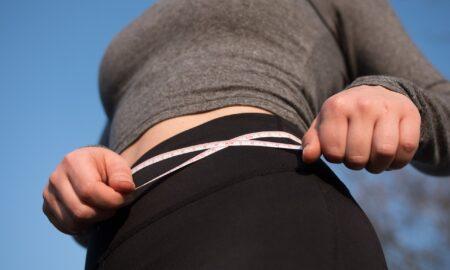Q: I’m a fan of your book Natural Bodybuilding and have it out on my coffee table. I’ve followed it for nutrition and even the workout phases. I’d like your take on something. I’m competing in our provincial show—I’m three weeks and five days out—and for the first time I’m working with a trainer on my contest prep. But I’m at a standstill right now, and it’s affecting me to the point of stress—and we know what hormone stress can release. Not good this close to a show. My wife often says that you and I kind of have the same body type, and she thought I should write to get your opinion.
My trainer put me on the ketogenic diet for the last eight weeks, and my training routine hasn’t changed. I know I’m losing muscle mass. A while back I was frustrated to the point that I switched to another trainer because my approach to competing is more in tune with what she thinks. Both of these women are supreme bodybuilders in their own right and have competed on a high level—Nationals, both in Canada and the United States. Both are very intuitive but so different in their approaches. Now I feel that if I stay any longer on a ketogenic diet and train the way I do, I’m just going to atrophy my muscles, especially in my legs, which are a good feature.
I’m eating hardly any carbs, and, on top of that, she bumped up my cardio from 60 minutes per day to 75 seven days a week, and I still train heavy. To me, that’s just too much cardio at this point. Right now, I’m 194 with 9.5 percent bodyfat, and I’m 46 years old. I’m competing in the masters class. For me to get any leaner is very hard, especially when I carb load.
Yesterday morning I was a bit tight and smooth after training back. Then I went to posing practice with my trainer, and nothing good came out of it except that she bumped up my cardio, told me no cheat meals and is keeping me on the ketogenic diet. I asked her if she was going to load and deplete the week of the show, and her response was she doesn’t know. I feel that if a trainer doesn’t know what to do with you three weeks out from a show, then something is not on schedule. So yesterday afternoon I was a little stressed and decided to load. Guess what? Poof, bang, everything started to pop out, and I looked big standing in natural light and hitting some poses.
Can you give me your two cents on what my training should be like, including cardio and nutrition? I’m on no fats for four days and then one day with fats—but the fat day is just some white fish. I’m in the construction field of work as well, which demands heavy lifting and lots of walking.
A: Nothing against your trainer, but she seems to be giving you a diet that she’s recommended for other clients in the past without any regard to how you respond to it. It’s obvious that your body needs more carbohydrate and that you’re probably overdoing the cardio.
The “no-carb” approach to dieting has been very popular for the past few years. Too much carbohydrate can contribute to fat storage, so it makes sense to keep the count very low in order to get really ripped. Carbohydrate also plays a big role in muscle size and fullness, however. If you eat no or very low-carb foods, you risk losing muscle.
There’s a big difference in carbohydrate intake for natural bodybuilders compared to bodybuilders who are not natural. Anabolic steroids and other physique-enhancing drugs help retain muscle mass regardless of diet. You can eat a very-low-carbohydrate diet and retain muscle when using steroids. For the natural bodybuilder that same diet can lead to a loss of muscle.
As you’re in your mid-40s, you probably need a lower-carbohydrate diet in order to lose bodyfat. Metabolism and hormone activity change as we get older, so we often need to adjust our diets to get really ripped.
When I was younger, I could eat a high-carbohydrate diet and still get ripped for competition. As I reached my late 30s, that diet was no longer effective. It would take me much longer to lose stored bodyfat when I kept my carbs high—250 to 300 grams a day.
During my last year of competing, I knew I needed to make a change in my diet or I wouldn’t reach peak condition in time for the contest. In fact, I was five weeks out from my first contest for that year, and I still had quite a way to go. I wasn’t getting rid of the bodyfat fast enough.
I lowered my carb count to 200 grams on my training days and only 150 grams on nontraining days. Within three days I noticed a big difference. The reduction in my carb intake was the determining factor in the change in my physique.
Over the years I’ve noticed that I need to reduce my carbs even more in order to get the same results. I’ve been dieting recently to get ripped for some photos, and my fat loss has again been very, very slow. The same diet that worked before—200 grams of carbs on my training day and 150 grams on my rest days—was no longer effective.
I decided to try lowering my carb count significantly to see if I noticed any difference. I cut it in half from my normal diet, eating only 100 grams or so on my training days and as few as 70 grams on my nontraining days.
I have to admit that the diet was brutal. I immediately noticed a difference in my energy level and brain function. I felt I was in a haze most of the day. Handling more than two people in a row for my personal-training business was extremely difficult.
It took me only about two weeks to discover that that diet wasn’t for me. I decided to increase my carb count again, but the split between training and nontraining days didn’t go up to 200/150 grams. Instead, I kept it at 175/120 grams.
In addition to the slight reduction in carbs, I increased my cardio. Normally I limit my cardio to walking on the treadmill three days a week. I decided to try high-intensity interval training, or HIIT, alternating high-intensity bursts—sprinting, for example—with lower-intensity training—walking instead of sprinting. Research has shown that HIIT burns more fat and increases the metabolism throughout the day.
HIIT is also an extremely difficult form of cardio. I had to start really slowly. I used the stationary bike because I thought it would be the easiest to adjust the intensity level. For my high-intensity bursts I increased the resistance to level 12 on the bike and pedaled as hard as I could, aiming for 120 rpm. I maintained that level of intensity for one minute.
After my high-intensity burst I reduced the intensity by lowering the resistance to level 8 and decreasing the speed to 80 rpm. I maintained that for two minutes before cranking up the resistance and speed for another high-intensity minute.
It was brutal. In the beginning I could do only three cycles before I had to stop. My goal was to increase my high-intensity cardio workout by one cycle per week. I was surprised at how out of shape I was when it came to that kind of cardio training.
One method I used to increase my high-intensity time was to do more than one HIIT session per week. In the beginning I was limiting myself to doing the HIIT cardio only on Saturdays. When I increased the frequency to two or even three days a week, my endurance and capacity for work also increased.
I recommend that you increase your carb intake first. Count up how many carbs you’re eating on the ketogenic diet and then make some changes. Start by following the guidelines that I recently used—the 175/120 split on training and nontraining days. That should help restore glycogen in the muscle cells and give you more workout energy.
Next, decrease your cardio. Seventy-five minutes of cardio seven days a week has got to be very detrimental to muscle retention. When you combine that much cardio with a very-low-carb diet, the results are even worse. I don’t think there is ever a reason to do cardio seven days a week. Cut back to four and alternate HIIT with standard, lower-intensity cardio—two days each per week. I seriously doubt whether you’ll need more than that to lose fat.
The combination of more carbs and less cardio will help you fill out your muscles and even decrease your bodyfat. In my opinion, you’ve depleted your glycogen stores so severely with the no-carb diet and seven days a week of cardio that your metabolism has slowed. If you give your body what it needs—more carbs and less cardio—it should respond by filling out and getting leaner.
Q: I have been on a four-to-six-rep routine, working four to five exercises each day for two to three sets each, for the past year and a half. The actual program changes every four weeks, but now I feel like the system is not working anymore. Could you provide me with a “get-big” routine? My weight is starting to plateau. I tried taking a week off, but that didn’t help. I need a new routine.
A: It sounds as if your body has grown accustomed to the low-rep work. Change your program by increasing both volume and reps.
Low reps and high resistance are great for increasing strength and muscle mass. They target the fast-twitch muscle fibers, which are the fibers most responsible for muscle size.
If you increase your repetition range from four to six to eight to 10, you’ll pump more blood into the muscles and get a better pump. That will lead to more muscle growth.
I’m not sure how you’re currently splitting up your workouts, but here’s an example of a get-big program that uses a higher-repetition range and splits the body over two workouts:
Day 1: Chest, back and shoulders
Bench presses 4 x 10, 8, 6, 6
Incline presses 3 x 10, 8, 6
Flyes 3 x 10, 8, 8
Wide-grip chins 3 x 12, 10, 8
Barbell rows 3 x 10, 8, 6
Seated cable rows 3 x 10, 8, 8
Seated dumbbell presses 3 x 10, 8, 6
Lateral raises 3 x 10, 8, 8
Bent-over laterals 3 x 10, 8, 8
Dumbbell shrugs 3 x 12, 10, 8
Day 2: Abs, legs and arms
Hanging knee raises 3 x 30-40
Crunches 3 x 30-40
Leg extensions 3 x 15, 12, 10
Squats 4 x 12, 10, 8, 6
Hack squats 3 x 12, 10, 8
Leg curls 3 x 10, 8, 8
Stiff-legged deadlifts 3 x 10, 8, 6
Pushdowns 3 x 10, 8, 6
Lying extensions 3 x 10, 8, 6
Incline curls 3 x 10, 8, 8
Barbell curls 2 x 10, 8
Editor’s note: John Hansen has won the Mr. Natural Olympia and is a two-time Natural Mr. Universe winner. Check out his Web site at www.NaturalOlympia.com, or send questions or comments to him via e-mail at [email protected]. Look for John’s DVD, “Natural Bodybuilding Seminar and Competitions,” along with his book, Natural Bodybuilding, and his training DVD, “Real Muscle,” at his Web site or at Home Gym Warehouse, www.Home-Gym.com. Listen to John’s new radio show, “Natural Bodybuilding Radio,” at www.NaturalBodybuildingRadio.com. You can send written correspondence to John Hansen, P.O. Box 3003, Darien, IL 60561. IM




















You must be logged in to post a comment Login